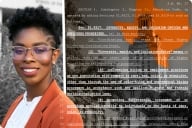You have /5 articles left.
Sign up for a free account or log in.
The tragic killings at Virginia Tech and Northern Illinois University have focused unprecedented attention on campus crime. But a special report issued by the Bureau of Justice Statistics last week -- updating data more than a decade old -- found long-term declines in campus crime rates at four-year institutions, and also substantial evidence for the professionalization of campus security forces.
Campus crime rates at four-year college and universities fell 9 percent for violent crimes and 30 percent for property crimes, between 1994 and 2004, the report found. The total in 2004, the bureau said, was 62 reports of serious violent crime and 1,625 reports of serious property crime per 100,000 students. Crime rates were significantly higher at private colleges than at public institutions, the report found.
Most of the report focuses not on crime rates, but on campus law enforcement agencies. Virginia Tech and Northern Illinois have prompted many campuses to talk about adding positions or authority to law enforcement personnel, and the report -- from a division of the U.S. Department of Justice -- suggests that both positions and authority have already been rising.
During the 2004-5 academic year, 74 percent of the 750 law enforcement agencies at four-year colleges with enrollments of at least 2,500 used sworn law enforcement officers (meaning that they had full arrest powers granted by state or local governments). Public institutions are much more likely than are private institutions to have sworn officers -- 93 percent to 42 percent.
The report found that two-thirds of campus law enforcement agencies used armed patrol officers during the 2004-5 academic year, and there was a huge gap in use based on whether colleges have sworn officers. Armed patrols are used at nearly 9 of 10 campuses with sworn officers, but only nearly 1 in 10 of those without sworn officers. Of the colleges that participated in both the 1994 and 2004 studies, the percentage reporting the use of armed patrol officers increased from 66 percent to 72 percent.
Across all four-year institutions, there was also an increase in the number of personnel for law enforcement during that decade, going from an average of 2.8 employees per 1,000 students to 3 per 1,000.
In terms of security personnel demographics and requirements, here are some of the findings from the report (based on reports from the 2004-5 academic year):
- Of full-time sworn personnel, 69.4 percent are white, 21.0 percent are black, 6.5 percent are Hispanic, and the rest are in other groups.
- The vast majority of sworn personnel (83.3 percent) are men.
- About 30 percent of campus police departments require officers to have college degrees. Only 20 percent of local police departments have such a requirement.
- Campus police officers had starting salaries that were about 6 percent lower, on average, than local police agencies, when comparing units of similar size. Campus police chiefs, however, were likely to earn slightly more than local chiefs. In addition, campus police agencies were more likely than local agencies to have extra pay based on shift differential, merit or hazardous duty.
Almost all campus law enforcement agencies have emergency preparedness plans, but there are gaps on other emergency related activities. Terrorism response plans were in place at 70 percent of public institutions and 60 percent of privates. Emergency preparedness exercises were held by 63 percent of public units and 49 percent of private units. (Anecdotal evidence suggests that these figures have probably increased in the last year.)
The report also documents that large campuses have built up substantial security staffs. New York University had the largest staff, at 345, followed by the University of Texas Health Science Center at Houston, with 235, and Temple University with 202.
Of the 10 campuses with the largest number of sworn officers, the institution that is the westernmost is Vanderbilt (which is tied at #9). Two of the institutions are in Washington and one other is in the Washington suburbs, while two others are in Philadelphia.
Top 10 Universities in Number of Full-Time Sworn Officers
| Rank | Institution | Number of Officers |
| 1. | Howard U. | 166 |
| 2. | Temple U. | 119 |
| 3. | U. of Pennsylvania | 100 |
| 4. | U. of Medicine and Dentistry of New Jersey | 97 |
| 5. | George Washington U. | 95 |
| 6. | U. of Florida | 86 |
| 7. | Georgia State U. | 79 |
| 8. | Yale U. | 78 |
| 9. (tie) | U. of Maryland at College Park | 76 |
| 9. (tie) | Vanderbilt U. | 76 |








